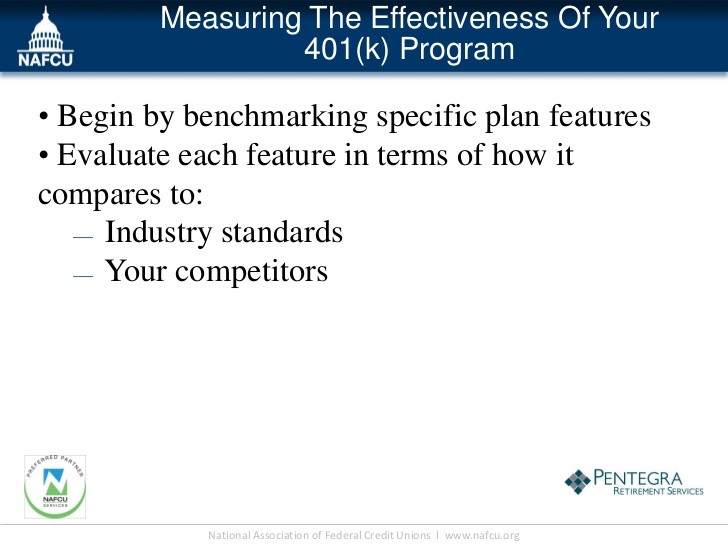How to Make Your 401(k) Plan Work Harder
Post on: 31 Май, 2015 No Comment

ENLARGE
Greg Clarke
Here’s a five-step plan to fix your 401(k).
1 Take control.
Take a look at the full range of investment choices available to you. That should include, at a minimum, a handful of low-cost domestic and international stock and bond funds. If your plan doesn’t even offer those you should talk to the people in charge at your employer and insist that they move to a better plan.
Many people are too intimidated, or busy, to choose their portfolio. If you’re in that camp, your plan will have dumped your money into a default portfolio—such as a low-yielding but stable fund, or a target-date fund ostensibly designed for someone of your age.
There is nothing inherently wrong with these funds. But that doesn’t mean you can rely on them, either.
These default options aren’t designed for your best interests, but for the best interests of your plan provider. Instead of maximizing your likely returns, they are designed to minimize the provider’s risk of a nasty lawsuit.
As a result, your money may well be sitting in a poorly designed portfolio that guarantees mediocre performance. Target-date funds, for example, are a great idea in theory. In practice, most are far too heavily weighted toward U.S. stocks, and they use a cookie-cutter approach to investing.
Consider the alternatives available to you.
You also should understand if your company makes matching contributions, and, if so, how much it will match. There’s no good reason for missing out on a company match. It’s also a good idea to find out if your plan allows such things as personal loans: This may offer you access to cheaper capital than a bank, although there are risks in borrowing from your plan.
2 Cut your costs.
Many 401(k) plan providers stock their plans with high-fee mutual funds. That’s great for them, and bad for you. Most mutual funds are far too mediocre to justify hefty fees, which just soak up a lot of your investment returns. A fund that charges you an extra 1% a year may end up costing you most of the tax benefits of your plan.
There are managed investment funds out there that are worth the money, but few of them—if any—are likely to find their way into a 401(k) plan. If you’re stuck with plain-vanilla funds, you are going to be better off going for the ones with the lowest costs. Nearly all the time your best options will be the low-cost index funds.
3 Lighten up on U.S. stocks.
Most people keep most of their stock-market investments in the U.S. It’s safer, right? I mean, it’s the home market so it’s less risky than foreign stocks, yes?
That’s what conventional wisdom says, but it’s hooey. Investors sell themselves short by investing too much in the U.S.A. You’re already overinvested here anyway—you have your life and career here.
And U.S. equities start 2012 looking relatively expensive. U.S. stocks today are somewhere between modestly and heavily overpriced when compared to such metrics as average earnings or the value of corporate assets, according to data from the Federal Reserve and data tracked by Yale University economics professor Robert Shiller.
The dividend yield on the Standard & Poor’s 500-stock index, at just 2.1%, is very low by historical standards.
Predicting future stock-market returns is notoriously difficult. But based on current valuations, the U.S. stock market seems to offer a mediocre bet.
4 Look internationally.
Many 401(k) plans go light on international investment options. The real reason is simply the incompetence and complacency of plan sponsors.
But if your plan offers international options, take advantage. The turmoil of 2011 has left many overseas stock markets looking like a good value.
Western European markets fell nearly 30% from last year’s peak. Japan’s Nikkei 225 index is now lower than it was during the tsunami panic nearly a year ago. Emerging markets from Brazil to India, the investment hotshots of 2010, have dropped dramatically out of fashion again. Their stock markets crashed last year.
These offer some excellent buying opportunities.
Emerging markets account for about a third of the world economy, and their share is growing. Developed overseas markets, meaning Europe, Japan and Australasia, account for about two-fifths. They are on sale, and most people are underinvested there.
5 Review your bond funds.
As a general rule, your 401(k) and other tax shelters are where to hold the bond portion of your portfolio. That’s because bonds are much more vulnerable to taxes than stocks.
Bonds generate most of their returns through coupons, and those are usually taxed at ordinary-income tax rates. By contrast, stock dividends and capital gains generally get taxed more lightly.
Right now is, admittedly, a risky time to invest in U.S. bonds. Yields on U.S. Treasurys have slumped to historic lows. Any pickup in the economy, and inflation, could send bond funds tumbling.
While Treasury bonds offer meager yields here, look at any corporate bond funds. That includes investment-grade bonds and more volatile high-yield bonds.Both offer somewhat better yields. Emerging-markets bonds offer particularly good opportunities, argues investment guru Rob Arnott, chairman of Research Affiliates. They pay higher interest rates than those in the U.S. while their governments’ finances are actually in better shape.
It’s crazy that most 401(k) plans offer such a limited range of investment options. Paradoxically you don’t get full control of your money unless you leave your employer, when you can roll the plan over into a self-directed individual retirement account. But your 401(k) still represents a great investment asset, and this is a good time to get it into shape.














